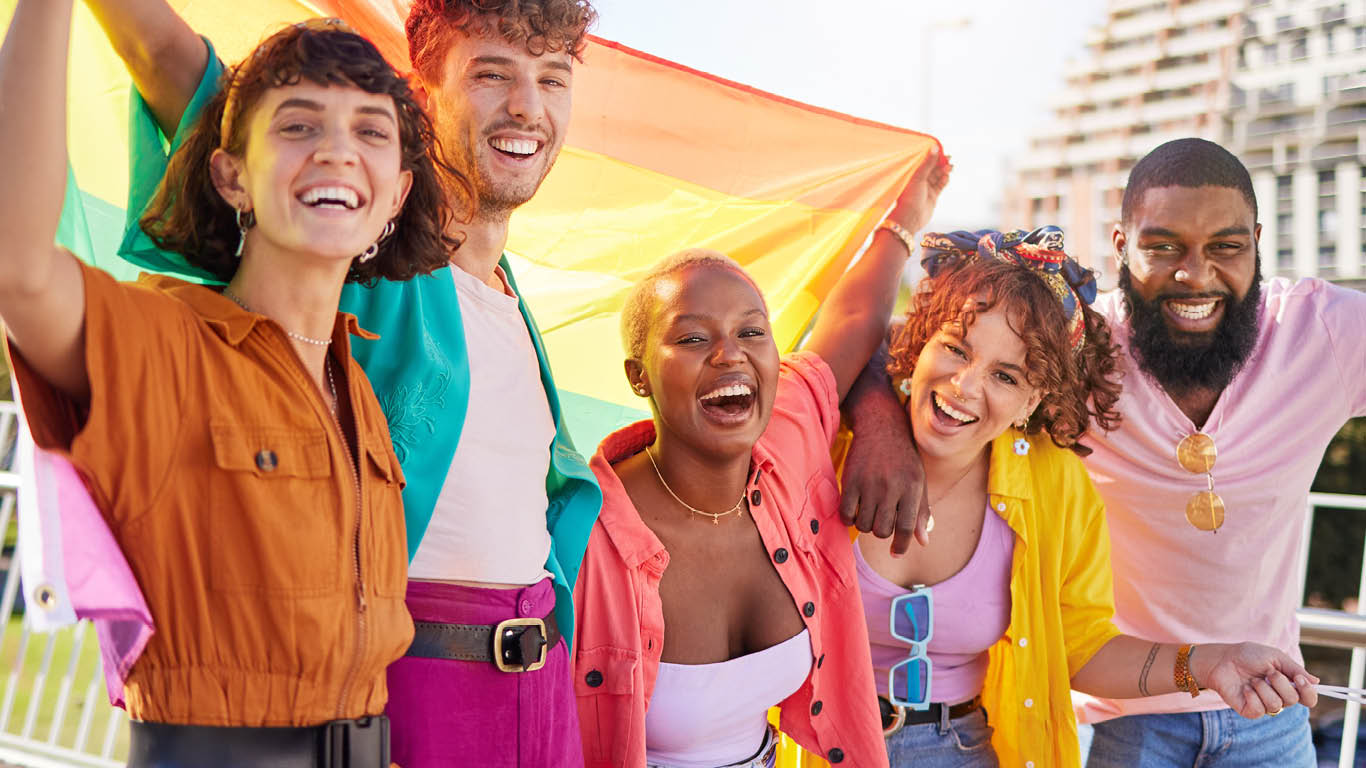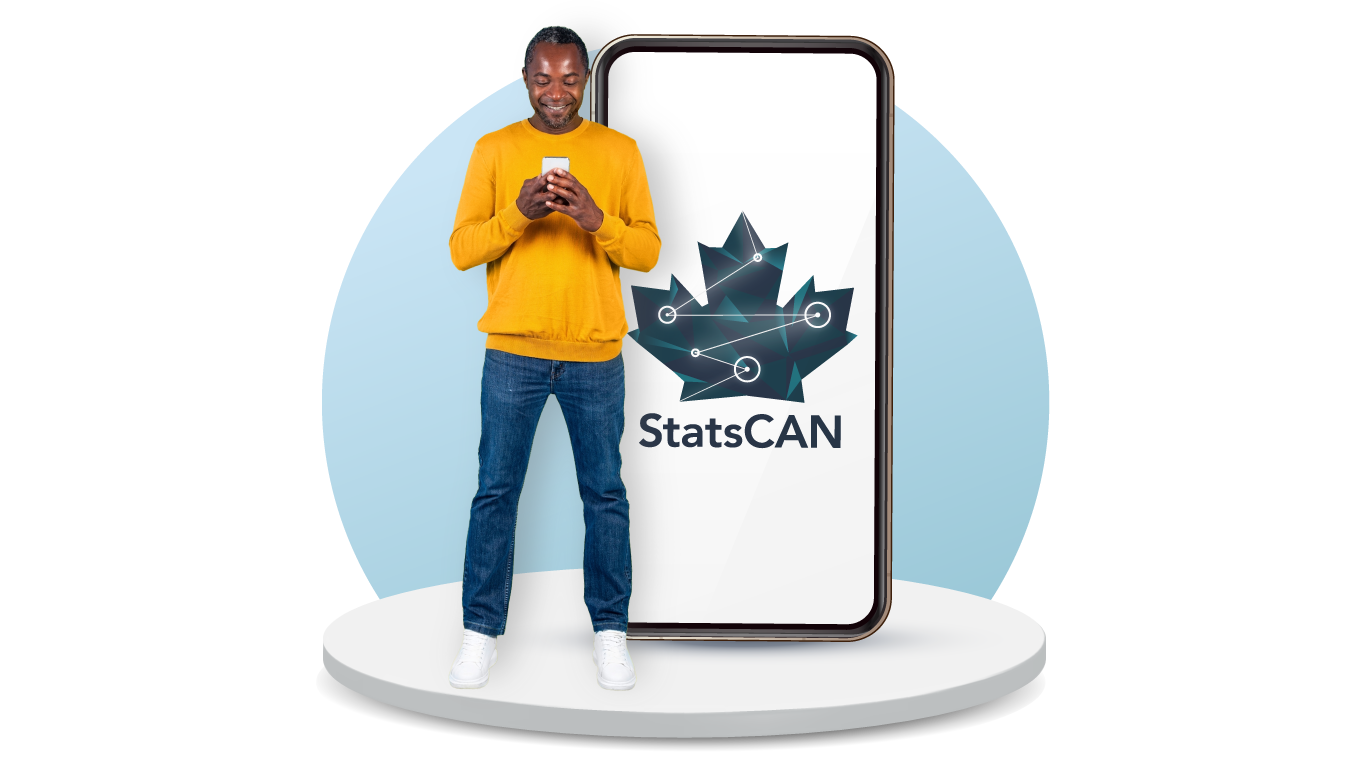
The month of June marks the beginning of Pride Season in Canada. Over the summer (June to September), a wide range of events take place across Canada to celebrate 2SLGBTQI+ people (that is, people who are Two-Spirit, lesbian, gay, bisexual, transgender, queer, intersex, or use other terms related to gender and sexual diversity) and honour the contributions that they have made and continue to make.
Historically, Pride gatherings emerged from the first large-scale protests for 2SLGBTQI+ rights. In Canada, the first demonstrations took place in Ottawa and Vancouver in 1971. By 1973, Pride events were held in several major Canadian cities. Toronto’s Pride weekend in June is now among the largest Pride events in North America.
To welcome Pride Season, let’s explore some characteristics of Canada’s 2SLGBTQ+ population.
Youth are more likely to report being 2SLGBTQ+
According to data from the 2019 to 2021 Canadian Community Health Survey, approximately 1.3 million people, or 4.4% of the Canadian population aged 15 years and older, reported being 2SLGBTQ+. Among the 2SLGBTQ+ population, 52.7% were cisgender women, 39.2% were cisgender men, 3.9% were transgender women or transgender men, and 4.2% were non-binary people.
Among all age groups, youth made up the largest share of the 2SLGBTQ+ population from 2019 to 2021. Overall, 1 in 10 youth aged 15 to 24 years (10.5%) reported being 2SLGBTQ+. By comparison, 4.1% of adults aged 25 to 64 years and 1.3% of adults aged 65 years and older reported being 2SLGBTQ+. Younger people may be more likely to report being 2SLGBTQ+ than their older counterparts because of having grown up in a society that is more accepting of gender and sexual diversity than previous generations.
Higher educational attainment among the 2SLGBTQ+ population
Among the population aged 25 to 64 years, from 2019 to 2021, a higher proportion of 2SLGBTQ+ individuals (40.3%) held a bachelor’s degree and above than cisgender and heterosexual (i.e., non-2SLGBTQ+) people (36.8%). Conversely, a trade qualification as the highest level of education was more common among non-2SLGBTQ+ individuals (9.2%) than 2SLGBTQ+ people (6.3%).
Sexual and gender diversity among couples and families
In 2021, of the 8.6 million couples in Canada, 95,435 were same-gender couples, and 32,205 included at least one transgender man or woman or one non-binary person. Same-gender couples, comprised of either two cisgender women or two cisgender men, represented 1.1% of all couples, while couples comprised of at least one transgender woman, man or non-binary person represented about 1 in every 250 couples (0.4%). Together, same-gender couples and couples comprised of at least one transgender woman, man or non-binary person represented 1.5% of all couples in the country.
In 2021, the majority of couples comprised of at least one non-binary person were living common law, without children living at home with them. Among couples comprised of at least one transgender woman or man, 74.8% were married and 37.0% had children, while 38.8% of couples comprised of at least one non-binary person were married and 21.5% had children.
Same-gender couples with two cisgender men were the least likely to have children (6.2%) or to be married (34.3%). Among all same-gender couples with children, nearly four in five (79%) were couples with two cisgender women.
Celebrate Pride
Pride Season encompasses a wide range of different events:
- Pride Month, celebrated every June in many countries
- Public Service Pride Week, celebrated annually in the third week of August
- Pride events celebrated all summer long across Canada
This Pride Season is an opportunity to take part in celebrations and activities in your region and to honour the contributions of 2SLGBTQI+ people in all aspects of Canadian society. Visit the 2SLGBTQI+ Secretariat to learn more about Pride Season and Pride events happening across Canada.
Explore more data on 2SLGBTQ+ populations using Canada’s Transgender and Non-Binary Population: Data Visualization Tool or on the Sex, gender and sexual orientation statistics portal.
Note to readers
The Government of Canada adopted the acronym 2SLGBTQI+ to refer to Two-Spirit, lesbian, gay, bisexual, transgender, queer and intersex people and those who use other terms related to gender and sexual diversity. Statistics Canada uses the acronym 2SLGBTQ+ for data analysis purposes, as information is not yet specifically collected about intersex people in surveys.
The 2SLGBTQ+ population is comprised of individuals who reported being lesbian, gay, bisexual or of another sexual orientation than heterosexual, as well as those whose reported gender was neither exclusively man nor woman or whose reported sex at birth did not correspond with their reported gender.

StatsCAN app
Did you know you can read StatsCAN Plus articles and more on the StatsCAN app? If you’re already using the app, let us know what you think by leaving a review in the App Store and Google Play.
Contact information
For more information, contact the Statistical Information Service (toll-free 1-800-263-1136; 514-283-8300; infostats@statcan.gc.ca) or Media Relations (statcan.mediahotline-ligneinfomedias.statcan@statcan.gc.ca).

